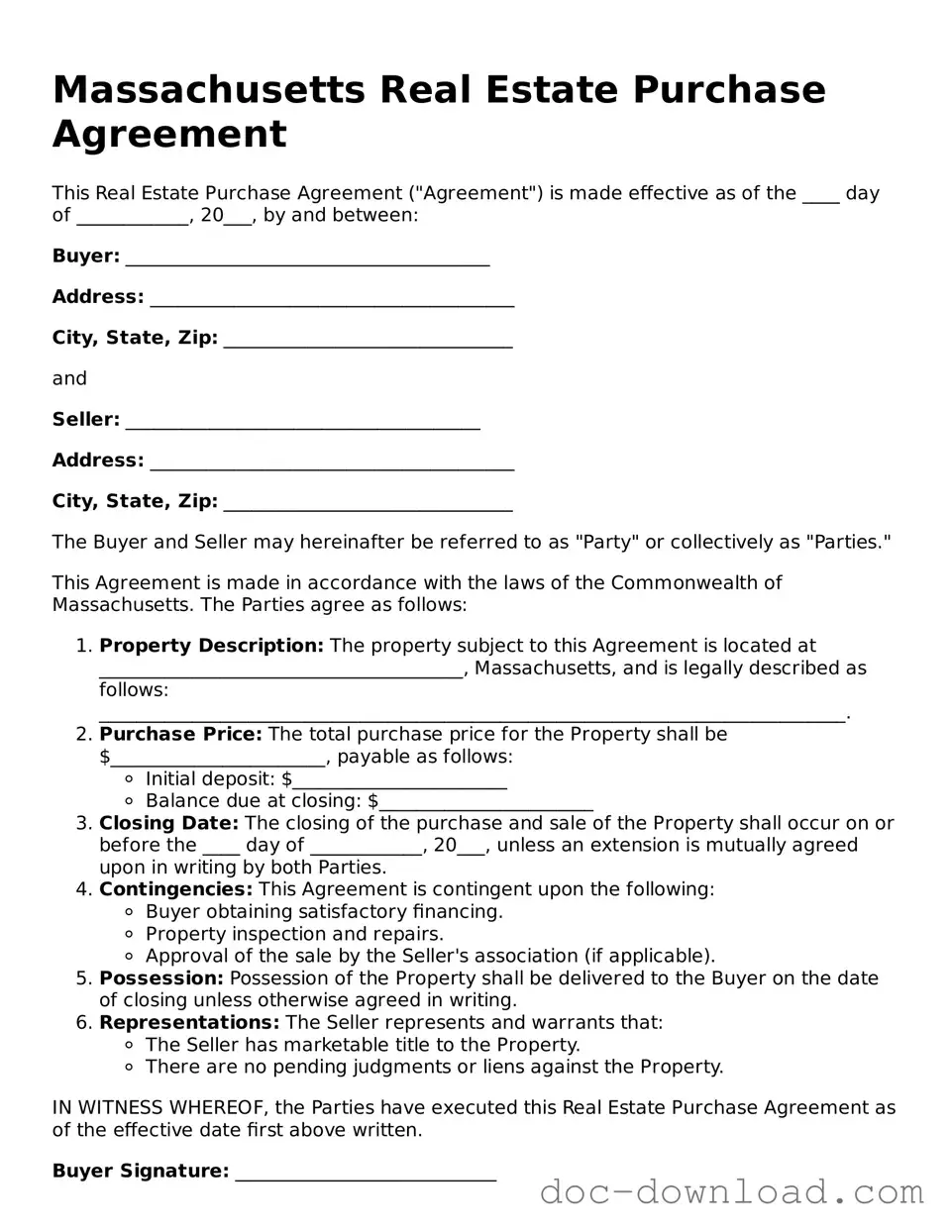The Massachusetts Real Estate Purchase Agreement is similar to the Residential Purchase Agreement commonly used in various states. This document outlines the terms and conditions for the sale of residential property. Like the Massachusetts form, it includes essential elements such as the purchase price, financing details, and contingencies. Both agreements aim to protect the interests of buyers and sellers by clearly defining their obligations and rights during the transaction process.
Another document that shares similarities is the Commercial Real Estate Purchase Agreement. This form is tailored for commercial properties, but it serves the same fundamental purpose as the Massachusetts agreement. Both documents detail the terms of sale, including price and closing dates. They also address contingencies specific to commercial transactions, such as zoning compliance and lease agreements, ensuring that both parties are aware of their responsibilities.
The Offer to Purchase is another document that resembles the Massachusetts Real Estate Purchase Agreement. This preliminary document is often used by buyers to formally express their intent to purchase a property. Like the Massachusetts form, it outlines the proposed purchase price and any contingencies. Once the seller accepts the offer, it can lead to a more detailed purchase agreement, much like the Massachusetts form serves as a comprehensive contract following an initial offer.
The Letter of Intent (LOI) is also comparable to the Massachusetts Real Estate Purchase Agreement. While an LOI is generally less formal, it serves as a preliminary agreement outlining the main terms of a proposed transaction. Both documents aim to establish a mutual understanding between buyer and seller. An LOI can lead to a more detailed agreement, similar to how the Massachusetts form provides a complete framework for the sale.
The Purchase and Sale Agreement (P&S) is another document that aligns closely with the Massachusetts Real Estate Purchase Agreement. This document is often used in real estate transactions to formalize the sale after an offer is accepted. Both agreements detail the terms of the sale, including price, contingencies, and closing procedures. The P&S often serves as a binding contract, similar to the Massachusetts form, ensuring that both parties are committed to the transaction.
The Real Estate Sales Contract is also similar in purpose and structure. This contract outlines the terms of a real estate transaction, including the sale price, property description, and contingencies. Like the Massachusetts agreement, it is designed to protect both parties by clearly stating their rights and obligations. Both documents facilitate a smooth transaction process by providing a clear framework for the sale.
The Lease Purchase Agreement shares similarities with the Massachusetts Real Estate Purchase Agreement, particularly in transactions involving properties available for lease with an option to buy. Both documents outline the terms of the sale, including purchase price and contingencies. The Lease Purchase Agreement allows tenants to rent the property while securing the right to purchase it later, mirroring the commitment found in the Massachusetts form.
When completing formal transactions, it is important to have the necessary documentation in place to protect all parties involved. For example, when selling a horse in Colorado, the use of a Colorado PDF Forms for a Horse Bill of Sale ensures that the sale is recorded accurately, providing security for both the buyer and the seller regarding the terms agreed upon.
Finally, the Exclusive Right to Sell Agreement is akin to the Massachusetts Real Estate Purchase Agreement in that it establishes a formal relationship between a seller and a real estate agent. While this document primarily focuses on the agent's rights to market and sell the property, it includes terms and conditions that may influence the eventual purchase agreement. Both documents are critical in the real estate transaction process, ensuring clarity and protection for all parties involved.
